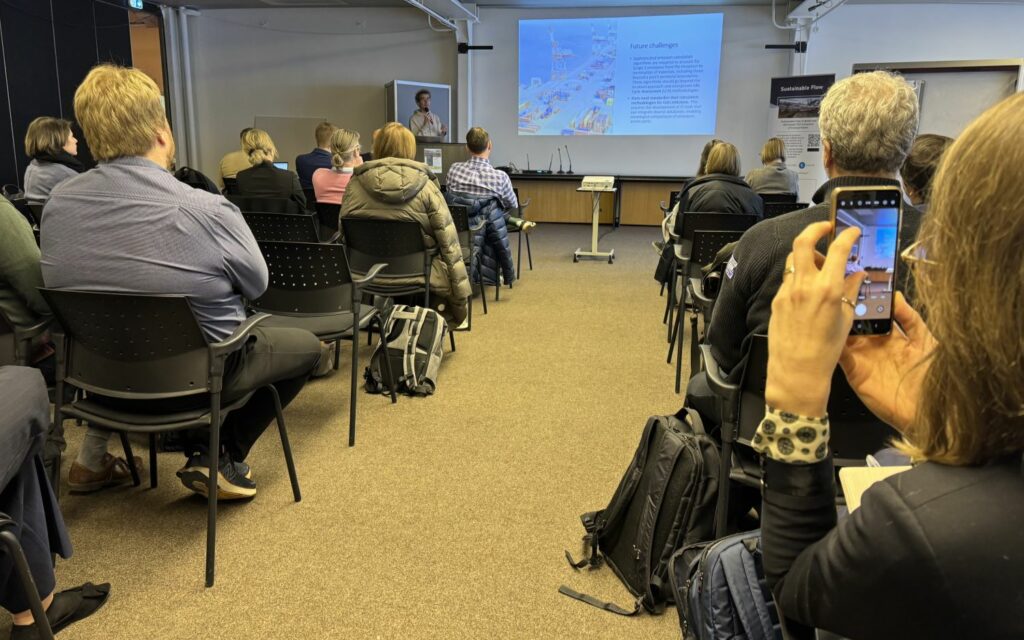Cross-Border Effort Brings Value to Green Growth in Port Operations
Tackling climate change and meeting increasingly stringent environmental requirements have set a demanding stage for the maritime sector. The additional flavor brought by slightly unpredictable global economic situation and increase of costs have not been easy to digest either. Sustainable Flow project, which has been set to support sustainability and green growth of port operations, held a seminar in Tallinn to introduce the multifaceted environment where the maritime sector and ports operate.

Sustainable Flow has seven partners from Finland, Sweden, Estonia, and Latvia. All of them share the same mission: to support sustainable flow of goods and to decrease CO2 emissions of transportation.
– The Baltic Sea is one of the busiest waters in the world, which in practice means 15% of the global cargo traffic, says Heikki Koivisto in his opening remarks of the event.
Thus, every environmental effort will have an impact not only in the Central Baltic Area but on a global scale. Sustainable Flow’s Lead Project Manager from Satakunta University of Applied Sciences explains further that the goal of the project is to cut CO2 emission by 10% in the pilot ports as they are significant transportation hubs.
– We have special target groups: seven pilot ports in Pori, Rauma, Mariehamn, Norrköping, Oxelösund, Tallinn, and Riga. They have already shown a great commitment to the project and to reducing their CO2 emissions, Koivisto stated during his presentation.
The seminar included five other presentations:
- Ulla Tapaninen from TalTech spoke about “Upcoming EU regulations about emissions of shipping”.
- Jonne Kotta – also from TalTech – gave an insight into “Integrating knowledge and data for improved GHG emissions calculation: The Port of Tallinn case study”.
- Rene Pärt as the Head of Business Development presented Port of Tallinn – CO2 Reduction through Digital Innovation and how sustainability has been integrated in their operations.
- Kadri Haufe from Nortal spoke about a case study on Smart Port concept where sustainability is one benefit factor in addition to efficiency gains.
- In her “Smarter and Greener” presentation Maiju Kaski from Fintraffic spoke e.g. about practical digitalization activities to reduce CO2 emissions pursued in Finland.
There were several key elements that got well-deserved attention, for example, how the digital tool to be developed in the Sustainable Flow project can help in practice. While it won’t cut down the CO2 emissions directly it will help adjust operations both onshore and offshore to cut the low-hanging fruits by smoothening processes. It is a win-win situation when the vessels can adjust and slow down their speed to, for example: less fuel is spent, hence there are less emissions. The same applies to onshore activities, where electrifying operations among others will help meeting the reduction targets. However, it is evident that at the end of the day, money and costs are the main drivers when striving towards environmental-friendly port operations.
The seminar was well received by over fifty participants. As discussions around the presentations were vivid it became evident that sustainability is a topic that has two sides to the story. On one hand all vote for greener solutions but on the other hand it forces a major change upon a rather traditional maritime field. Hence the key to success is cross-border cooperation of which Sustainable Flow is a perfect example: it is at the core of sustainability to find joint solutions to joint challenges.

